
A | B | C | D | E | F | G | H | CH | I | J | K | L | M | N | O | P | Q | R | S | T | U | V | W | X | Y | Z | 0 | 1 | 2 | 3 | 4 | 5 | 6 | 7 | 8 | 9
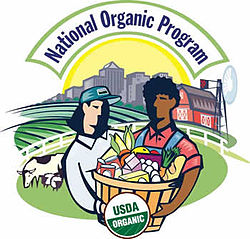

Organic certification is a certification process for producers of organic food and other organic agricultural products.[1] In general, any business directly involved in food production can be certified, including seed suppliers, farmers, food processors, retailers and restaurants. A lesser known counterpart is certification for organic textiles (or organic clothing) that includes certification of textile products made from organically grown fibres.
Requirements vary from country to country (List of countries with organic agriculture regulation), and generally involve a set of production standards for growing, storage, processing, packaging and shipping that include:
- avoidance of synthetic chemical inputs (e.g. fertilizer, pesticides, antibiotics, food additives), irradiation, and the use of sewage sludge;[2]
- avoidance of genetically modified seed;
- use of farmland that has been free from prohibited chemical inputs for a number of years (often, three or more);
- for livestock, adhering to specific requirements for feed, housing, and breeding;
- keeping detailed written production and sales records (audit trail);
- maintaining strict physical separation of organic products from non-certified products;
- undergoing periodic on-site inspections.
In some countries, certification is overseen by the government, and commercial use of the term organic is legally restricted. Certified organic producers are also subject to the same agricultural, food safety and other government regulations that apply to non-certified producers.
Certified organic foods are not necessarily pesticide-free, as certain pesticides are allowed.[3]
Purpose
Organic certification addresses a growing worldwide demand for organic food. It is intended to assure quality, prevent fraud, and to promote commerce. While such certification was not necessary in the early days of the organic movement, when small farmers would sell their produce directly at farmers' markets, as organics have grown in popularity, more and more consumers are purchasing organic food through traditional channels, such as supermarkets. As such, consumers must rely on third-party regulatory certification.
For organic producers, certification identifies suppliers of products approved for use in certified operations. For consumers, "certified organic" serves as a product assurance, similar to "low fat", "100% whole wheat", or "no artificial preservatives".
Certification is essentially aimed at regulating and facilitating the sale of organic products to consumers. Individual certification bodies have their own service marks, which can act as branding to consumers—a certifier may promote the high consumer recognition value of its logo as a marketing advantage to producers.
Methods
Third-party
In third party certification, the farm or the processing of the agriculture produce is certified in accordance with national or international organic standards by an accredited organic certification agency. To certify a farm, the farmer is typically required to engage in a number of new activities, in addition to normal farming operations:
- Study the organic standards, which cover in specific detail what is and is not allowed for every aspect of farming, including storage, transport and sale.
- Compliance — farm facilities and production methods must comply with the standards, which may involve modifying facilities, sourcing and changing suppliers, etc.
- Documentation — extensive paperwork is required, detailing farm history and current set-up, and usually including results of soil and water tests.
- Planning — a written annual production plan must be submitted, detailing everything from seed to sale: seed sources, field and crop locations, fertilization and pest control activities, harvest methods, storage locations, etc.
- Inspection — annual on-farm inspections are required, with a physical tour, examination of records, and an oral interview. The vast majority of the inspections are pre-scheduled visits.
- Fee — an annual inspection/certification fee (currently starting at $400–$2,000/year, in the US and Canada, depending on the agency and the size of the operation). There are financial assistance programs for qualifying certified operations.[4]
- Record-keeping — written, day-to-day farming and marketing records, covering all activities, must be available for inspection at any time.
In addition, short-notice or surprise inspections can be made, and specific tests (e.g. soil, water, plant tissue) may be requested.
For first-time farm certification, the soil must meet basic requirements of being free from use of prohibited substances (synthetic chemicals, etc.) for a number of years. A conventional farm must adhere to organic standards for this period, often two to three years. This is known as being in transition. Transitional crops are not considered fully organic.
Certification for operations other than farms follows a similar process. The focus is on the quality of ingredients and other inputs, and processing and handling conditions. A transport company would be required to detail the use and maintenance of its vehicles, storage facilities, containers, and so forth. A restaurant would have its premises inspected and its suppliers verified as certified organic.
Participatory
Participatory Guarantee Systems (PGS) represent an alternative to third party certification,[5] especially adapted to local markets and short supply chains. They can also complement third party certification with a private label that brings additional guarantees and transparency. PGS enable the direct participation of producers, consumers and other stakeholders in:
- the choice and definition of the standards
- the development and implementation of certification procedures
- the certification decisions
Participatory Guarantee Systems are also referred to as "participatory certification".[6]
Alternative certification options
The word organic is central to the certification (and organic food marketing) process, and this is also questioned by some. Where organic laws exist, producers cannot use the term legally without certification. To bypass this legal requirement for certification, various alternative certification approaches, using currently undefined terms like "authentic" and "natural", are emerging. In the US, motivated by the cost and legal requirements of certification (as of Oct. 2002), the private farmer-to-farmer association, Certified Naturally Grown, offers a "non-profit alternative eco-labelling program for small farms that grow using USDA Organic methods but are not a part of the USDA Certified Organic program."[7]
In the UK, the interests of smaller-scale growers who use "natural" growing methods are represented by the Wholesome Food Association, which issues a symbol based largely on trust and peer-to-peer inspection.
Organic certification and the Millennium Development Goals (MDGs)
Organic certification, as well as fair trade certification, has the potential to directly and indirectly contribute to the achievement of some of the Millennium Development Goals (MDGs), which are the eight international development goals that were established following the Millennium Summit of the United Nations in 2000, with all United Nations member states committed to help achieve the MDGs by 2015. With the growth of ethical consumerism in developed countries, imports of eco-friendly and socially certified produce from the poor in developing countries have increased, which could contribute towards the achievement of the MDGs. A study by Setboonsarng (2008) reveals that organic certification substantially contributes to MDG1 (poverty and hunger) and MDG7 (environmental sustainability) by way of premium prices and better market access, among others. This study concludes that for this market-based development scheme to broaden its poverty impacts, public sector support in harmonizing standards, building up the capacity of certifiers, developing infrastructure development, and innovating alternative certification systems will be required.[8]
International food standards
The body Codex Alimentarius of the Food and Agriculture Organization of the United Nations was established in November 1961. The Commission's main goals are to protect the health of consumers and ensure fair practices in the international food trade. The Codex Alimentarius is recognized by the World Trade Organization as an international reference point for the resolution of disputes concerning food safety and consumer protection.[9][10] One of their goals is to provide proper food labelling (general standard, guidelines on nutrition labelling, guidelines on labelling claims).
National variations
| Organic Certification Labels |
|---|
 Argentina |
 Australia |
 Australia |
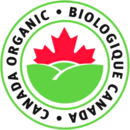 Canada |
 European Union |
 France |
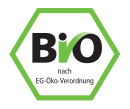 Germany |
India |
 Japan |
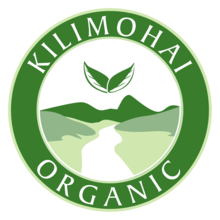 |
 Ukraine |
 United States |
In some countries, organic standards are formulated and overseen by the government. The United States, the European Union, Canada and Japan have comprehensive organic legislation, and the term "organic" may be used only by certified producers. Being able to put the word "organic" on a food product is a valuable marketing advantage in today's consumer market, but does not guarantee the product is legitimately organic. Certification is intended to protect consumers from misuse of the term, and make buying organics easy. However, the organic labeling made possible by certification itself usually requires explanation. In countries without organic laws, government guidelines may or may not exist, while certification is handled by non-profit organizations and private companies.
Internationally, equivalency negotiations are underway, and some agreements are already in place, to harmonize certification between countries, facilitating international trade. There are also international certification bodies, including members of the International Federation of Organic Agriculture Movements (IFOAM) working on harmonization efforts. Where formal agreements do not exist between countries, organic product for export is often certified by agencies from the importing countries, who may establish permanent foreign offices for this purpose. In 2011 IFOAM introduced a new program—the IFOAM Family of Standards—that attempts to simplify harmonization. The vision is to establish the use of one single global reference (the COROS) to access the quality of standards rather than focusing on bilateral agreements.[11]
The Certcost was a research project that conducted research and prepared reports about the certification of organic food.[12] The project was supported by the European Commission and was active from 2008 to 2011. The website will be available until 2016.[13]
North America
United States
In the United States, "organic" is a labeling term for food or agricultural products ("food, feed or fiber") that have been produced according to USDA organic regulations, which define standards that "integrate cultural, biological, and mechanical practices that foster cycling of resources, promote ecological balance, and conserve biodiversity". USDA standards recognize four types of organic production:
- Crops: "Plants that are grown to be harvested as food, livestock feed, or fiber used to add nutrients to the field."
- Livestock: "Animals that can be used in the production of food, fiber, or feed."
- Processed/multi-ingredient products: "Items that have been handled and packaged (e.g. chopped carrots) or combined, processed, and packaged (e.g. bread or soup)."
- Wild crops: "Plants from a growing site that is not cultivated."
Organic agricultural operations should ultimately maintain or improve soil and water quality, and conserve wetlands, woodlands, and wildlife.[14]
The Organic Foods Production Act of 1990 "requires the Secretary of Agriculture to establish a National List of Allowed and Prohibited Substances which identifies synthetic substances that may be used, and the non- synthetic substances that cannot be used, in organic production and handling operations."[15]
The Secretary of Agriculture promulgated regulations establishing the National Organic Program (NOP). The final rule was published in the Federal Register in 2000.[citation needed]
USDA Organic certification confirms that the farm or handling facility (whether within the United States or internationally) complies with USDA organic regulations. Farms or handling facilities can be certified by private, foreign, or State entities, whose agents are accredited by the USDA (accredited agents are listed on the USDA website). Any farm or business that grosses more than $5,000 annually in organic sales must be certified. Farms and businesses that make less than $5,000 annually are "exempt", and must follow all the requirements as stated in the USDA regulations except for two requirements:
- Exempt operations do not need to be certified to "sell, label, or represent" their products as organic, but may not use the USDA organic seal or label their products as "certified organic". Exempt operations may pursue optional certification if they wish to use the USDA organic seal.
- Exempt operations are not required to have a system plan that documents the specific practices and substances used in the production or handling of their organic products
Exempt operations are also barred from selling their products as ingredients for use in another producer or handler's certified organic product, and may be required by buyers to sign an affidavit affirming adherence to USDA organic regulations.[14]
Before an operation may sell, label or represent their products as "organic" (or use the USDA organic seal), it must undergo a 3-year transition period where any land used to produce raw organic commodities must be left untreated with prohibited substances.[16]
Operations seeking certification must first submit an application for organic certification to a USDA-accredited certifying agent including the following:[14]
- A detailed description of the operation seeking certification
- A history of substances used on the land over the prior 3 years
- A list of the organic products grown, raised, or processed
- A written "Organic System Plan (OSP)" which outlines the practices and substances intended for use during future organic production.
- Processors/handlers who are not primarily a farm (and farms with livestock and/or crops that also process products) must complete an Organic Handling Plan (OHP), and also include a product profile and label for each product
Certifying agents then review the application to confirm that the operation's practices follow USDA regulations, and schedule an inspection to verify adherence to the OSP, maintenance of records, and overall regulatory compliance[16]
Inspection During the site visit, the inspector observes onsite practices and compares them to the OSP, looks for any potential contamination by prohibited materials (or any risk of potential contamination), and takes soil, tissue, or product samples as needed. At farming operations, the inspector will also examine the fields, water systems, storage areas, and equipment, assess pest and weed management, check feed production, purchase records, livestock and their living conditions, and records of animal health management practices. For processing and handling facilities, the inspector evaluates the receiving, processing, and storage areas for organic ingredients and finished products, as well as assessing any potential hazards or contamination points (from "sanitation systems, pest management materials, or nonorganic processing aids"). If the facility also processes or handles nonorganic materials, the inspector will also analyze the measures in place to prevent commingling.[14]
If the written application and operational inspection are successful, the certifying agent will issue an organic certificate to the applicant. The producer or handler must then submit an updated application and OSP, pay recertification fees to the agent, and undergo annual onsite inspections to receive recertification annually. Once certified, producers and handlers can have up to 75% of their organic certification costs reimbursed through the USDA Organic Certification Cost-Share Programs.[14]
Federal legislation defines three levels of organic foods.[17] Products made entirely with certified organic ingredients, methods, and processing aids can be labeled "100% organic" (including raw agricultural commodities that have been certified), while only products with at least 95% organic ingredients may be labeled "organic" (any non-organic ingredients used must fall under the exemptions of the National List). Under these two categories, no nonorganic agricultural ingredients are allowed when organic ingredients are available. Both of these categories may also display the "USDA Organic" seal, and must state the name of the certifying agent on the information panel.[18]
A third category, containing a minimum of 70% organic ingredients, can be labeled "made with organic ingredients", but may not display the USDA Organic seal. Any remaining agricultural ingredients must be produced without excluded methods, including genetic modification, irradiation, or the application of synthetic fertilizers, sewage sludge, or biosolids. Non-agricultural ingredients used must be allowed on the National List. Organic ingredients must be marked in the ingredients list (e.g., "organic dill" or with an asterisk denoting organic status).[18] In addition, products may also display the logo of the certification body that approved them.[19]
Products made with less than 70% organic ingredients can not be advertised as "organic", but can list individual ingredients that are organic as such in the product's ingredient statement. Also, USDA ingredients from plants cannot be genetically modified.[19]
Livestock feed is only eligible for labeling as "100% Organic" or "Organic".[16]
Alcoholic products are also subject to the Alcohol and Tobacco Tax and Trade Bureau regulations. Any use of added sulfites in wine made with organic grapes means that the product is only eligible for the "made with" labeling category and therefore may not use the USDA organic seal. Wine labeled as made with other organic fruit cannot have sulfites added to it.[18]
Organic textiles made be labeled organic and use the USDA organic seal if the finished product is certified organic and produced in full compliance with USDA organic regulations. If all of a specific fiber used in a product is certified organic, the label may state the percentage of organic fibers and identify the organic material.[18]
Organic certification mandates that the certifying inspector must be able to complete both "trace-back" and "mass balance audits" for all ingredients and products. A trace-back audit confirms the existence of a record trail from time of purchase/production through the final sale. A mass balance audit verifies that enough organic product and ingredients have been produced or purchased to match the amount of product sold. Each ingredient and product must have an assigned lot number to ensure the existence of a proper audit trail.[18]
Some of the earliest organizations to carry out organic certification in North America were the California Certified Organic Farmers, founded in 1973, and the voluntary standards and certification program popularized by the Rodale Press in 1972.[20] Some retailers have their stores certified as organic handlers and processors to ensure organic compliance is maintained throughout the supply chain until delivered to consumers, such as Vitamin Cottage Natural Grocers, a 60-year-old chain based in Colorado.
Violations of USDA Organic regulations carry fines up to $11,000 per violation, and can also lead to suspension or revocation of a farm or business's organic certificate.[14]
Once certified, USDA organic products can be exported to countries currently engaged in organic trade agreements with the U.S., including Canada, the European Union, Japan, and Taiwan, and do not require additional certification as long as the terms of the agreement are met.[14]
In the United States the situation is undergoing its own FDA Food Safety Modernization Act.
Canada
In Canada, certification was implemented at the federal level on June 30, 2009. Mandatory certification is required for agricultural products represented as organic in import, export and inter-provincial trade, or that bear the federal organic logo.[21] In Quebec, provincial legislation provides government oversight of organic certification within the province, through the Quebec Accreditation Board (Conseil D'Accréditation Du Québec). Only products that use at least 95% organic materials in production are allowed to bear the Canadian organic logo. Products between 70-95% may declare they have xx% of organic ingredients, however they do not meet requirements to bear the certified logo.[22] Transitioning from a conventional agricultural operation to an organic operation takes the producers up to three years to receive organic certification, during which time products cannot be marketed as organic products, and producers will not receive pricing premiums on their goods during this time.[23] Cows, sheep, and goats are the only livestock that are allowed to be transitioned to organic, under Canada's regulations. They must undergo organic management for one year before their products can be considered certified organic.[24]
South America
Argentina
In Argentina, the Organic certification was implemented in December 2012, through a Ministry of Agriculture resolution.[25] Organic products are labeled with the Orgánico Argentina seal, which is administered by SENASA and issued by four private companies.[26][27][28] Organic production is regulated by the 25.127 Act, passed in 1999.[29]
During 2019, 70,446 hectares (174,080 acres) of land were used for organic production certified with the Argentine seal.[30]
Europe
Public organic certification
EU countries acquired comprehensive organic legislation with the implementation of the EU-Eco-regulation 1992. Supervision of certification bodies is handled on the national level. In March 2002 the European Commission issued an EU-wide label for organic food. It has been mandatory throughout the EU since July 2010.[31] and has become compulsory after a two-year transition period.[32]
The farmland converted to produce certified organic food has seen a significant evolution in the EU15 countries, rising from 1.8% in 1998 to 4.1% in 2005. For the current EU25 countries however the statistics report an overall percentage of just 1.5% as of 2005. However, the statistics showed a larger turnover of organic food in some countries, reaching 10% in France and 14% in Germany. In France 21% of available vegetables, fruits, milk and eggs were certified as organic. Numbers for 2010 show that 5.4% of German farmland has been converted to produce certified organic food, as has 10.4% of Swiss farmland and 11.7% of Austrian farmland.[33] Non-EU countries have widely adopted the European certification regulations for organic food, to increase export to EU countries.
In 2009 a new logo was chosen through a design competition and online public vote.[34][35] The new logo is a green rectangle that shows twelve stars (from the European flag) placed such that they form the shape of a leaf in the wind. Unlike earlier labels no words are presented on the label lifting the requirement for translations referring to organic food certification.[36]
The new EU organic label has been implemented since July 2010 and has replaced the old European Organic label. However, producers that have had already printed and ready to use packaging with the old label were allowed to use them in the upcoming two years.[37]
The development of the EU organic label was develop based on Denmark's organic food policy and the rules behind the Danish organic food label which at the moment holds the highest rate of recognition among its users in the world respectively 98% and 90% trust the label. The current EU organic label is meant to signal to the consumer that at least 95% of the ingredients used in the processed organic food is from organic origin and 5% considered an acceptable error margin.[38]
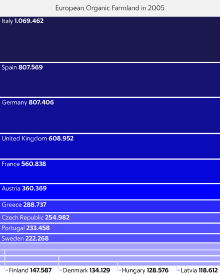
| Country | Area (ha) | Percent (%) |
|---|---|---|
| Austria | 360,369 | 11 |
| Belgium | 22,994 | 1.7 |
| Cyprus | 2 | 1.1 |
| Czech Republic | 254,982 | 7.2 |
| Denmark | 134,129 | 5.2 |
| Finland | 147,587 | 6.5 |
| France | 560,838 | 2 |
| Germany | 807,406 | 4.7 |
| Greece | 288,737 | 7.2 |
| Hungary | 128,576 | 2 |
| Ireland | 34,912 | 0.8 |
| Italy | 1,069,462 | 8.4 |
| Latvia | 118,612 | 7 |
| Lithuania | 64,544 | 2.3 |
| Luxembourg | 3,158 * | 2.4 |
| Malta | 14 | 0.1 |
| Netherlands | 48,765 | 2.5 |
| Poland | 82,730 * | 2.4 |
| Portugal | 233,458 | 6.3 |
| Slovakia | 90,206 | 4.8 |
| Slovenia | 23,499 | 4.8 |
| Spain | 807,569 | 3.2 |
| Sweden | 222,268 | 6.2 |
| Switzerland | 11 |
